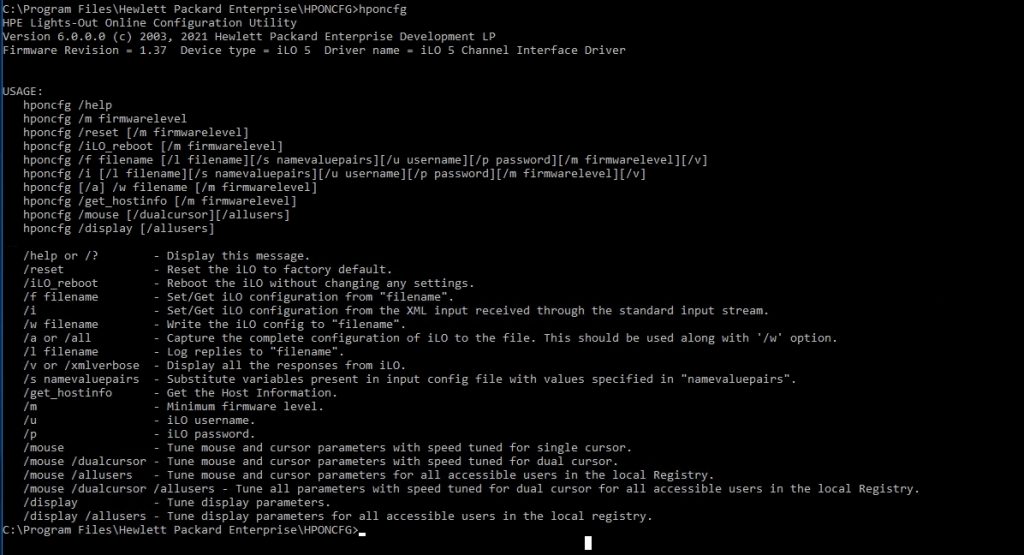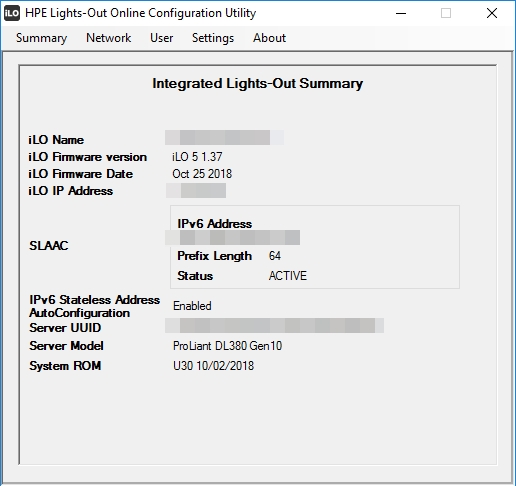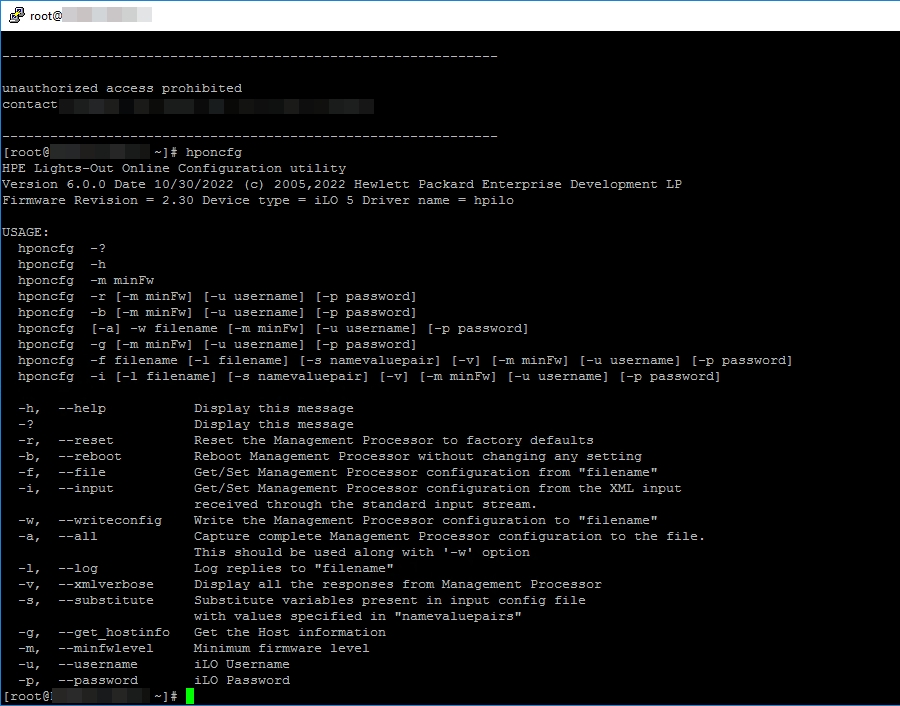Managing server hardware remotely is essential in modern IT environments. HPE’s Integrated Lights-Out (iLO) provides remote management capabilities for HPE ProLiant servers. One of the tools to configure and manage iLO is HPONCFG. This utility allows administrators to configure iLO settings without having to reboot the server or restart services, making it a powerful tool for system management.
In this post, we will cover how to use HPONCFG on both Windows and Linux systems, walking through installation, usage, and key commands.
What is HPONCFG?
HPONCFG (HP Online Configuration Utility) is a command-line utility used to configure iLO on HPE servers. The main advantage of HPONCFG is that it enables configuration of iLO without requiring server downtime. It directly interfaces with the iLO subsystem, applying configurations in real-time.
Prerequisites
Before using HPONCFG, make sure you have:
- Administrator or root access to the server.
- The appropriate HPONCFG package installed on your system (Windows or Linux).
- Firmware version of iLO that supports HPONCFG (usually iLO 2 or later).
Installing HPONCFG on Windows
1. Download the HPONCFG tool
- Visit the HPE support site and download the latest HP Lights-Out Online Configuration Utility for Windows or download it from here.
2. Install the tool:
- Run the installer and follow the installation prompts to install HPONCFG on your Windows machine.
Update: I figured it out that you will not be able to install the HP Lights-Out Online Configuration Utility when iLO Channel Interface Driver is missing. You will get this error when trying to install:
The software is not supported for installation on this system.
The installation program couldn’t find the Integrated Lights-Out Management Interface Driver which is required but is not currently installed. Please install the appropriate driver and then rerun the setup program.
Search on HPE Support Site after the right version. In my case, I needed iLO 5 Channel Interface Driver for Microsoft Windows Server 2016 and 2019. You can download this version from here.
After installing the driver, I could install iLO Configuration Utility successfully.
3. Verify installation:
- Once installed, open a command prompt and type the following command:
hponcfg /?- This should display the HPONCFG help menu, confirming that the tool is installed correctly. Installation path: C:\Program Files\Hewlett Packard Enterprise\HPONCFG

4. Graphical Interface
- A graphical user interface of the tool is also availale. A shortcut for it will be provided in “Start Menu > Programs > HPE System Tools > HPE Lights-Out Online Configuration Utility

Using HPONCFG on Windows
1. Extracting current iLO configuration:
- You can extract the current iLO configuration to an XML file:
hponcfg /w ilo-config.xml- This will save the current iLO settings in an XML file named
ilo-config.xml.
2. Modifying the iLO configuration:
- Edit the
ilo-config.xmlfile as needed. For example, to change network settings or user credentials, locate the respective tags in the XML and update them.
3. Applying new configuration:
- After making changes to the XML file, you can apply the new configuration using the command:
hponcfg /f ilo-config.xml4. Rebooting iLO:
- If you need to restart the iLO subsystem after making changes, use the following command:
hponcfg /iLO_reboot
5. Resetting iLO to Factory Defaults:
- If you need to reset the iLO subsystem to factory defaults, use the following command:
hponcfg /reset
Installing HPONCFG on Linux
1. Download the HPONCFG package:
- Download the HP Lights-Out Online Configuration Utility for Linux from the HPE support site or from here.
2. Install the package (If you didn’t download locally, copy the package using WinSCP before installation):
- For Red Hat or CentOS-based systems:
rpm -ivh hponcfg-x.x.x.rpm
- For Debian-based systems:
dpkg -i hponcfg-x.x.x.deb
3. Verify installation:
- To verify the installation, run:
hponcfg
- If installed correctly, it should display the available commands.

Using HPONCFG on Linux
1. Extracting the current iLO configuration:
- Use the following command to extract the iLO configuration to an XML file:
hponcfg -w ilo-config.xml
2. Modifying the iLO configuration:
- Open the
ilo-config.xmlfile using a text editor such asvimornanoand make the necessary changes to iLO settings.
3. Applying the new configuration:
- Apply the modified configuration using:
hponcfg -f ilo-config.xml
4. Rebooting iLO:
- If you need to restart the iLO subsystem after making changes, use the following command:
hponcfg -b
5. Resetting iLO to Factory Defaults:
- Reset the iLO subsystem to factory defaults if necessary by running:
hponcfg -r
Important HPONCFG Commands
- View help:
hponcfg /?(Windows) orhponcfg -h(Linux)
- Save current iLO configuration:
hponcfg /w filename.xml(Windows) orhponcfg -w filename.xml(Linux)
- Apply new iLO configuration:
hponcfg /f filename.xml(Windows) orhponcfg -f filename.xml(Linux)
- Reboot iLO:
hponcfg /iLO_reboot(Windows) orhponcfg -b(Linux)
- Display iLO information:
hponcfg /i(Windows) orhponcfg -i(Linux)
Tips for Using HPONCFG
- Backup your current configuration: Always create a backup of your current iLO configuration before making any changes.
- XML validation: Make sure your XML files are well-formed and validated before applying them. A mistake in the XML structure can lead to failed configurations.
- Script automation: HPONCFG commands can be automated in scripts for deploying iLO settings across multiple servers, saving time in large-scale environments.
Conclusion
HPONCFG is an essential tool for administrators who manage HPE servers. It allows for efficient and flexible management of iLO settings without server downtime. Whether you are using Windows or Linux, the ability to remotely configure server hardware enhances overall system reliability and uptime.
With the steps provided in this guide, you should now be able to install, configure, and use HPONCFG to manage iLO settings on your HPE servers effectively.
